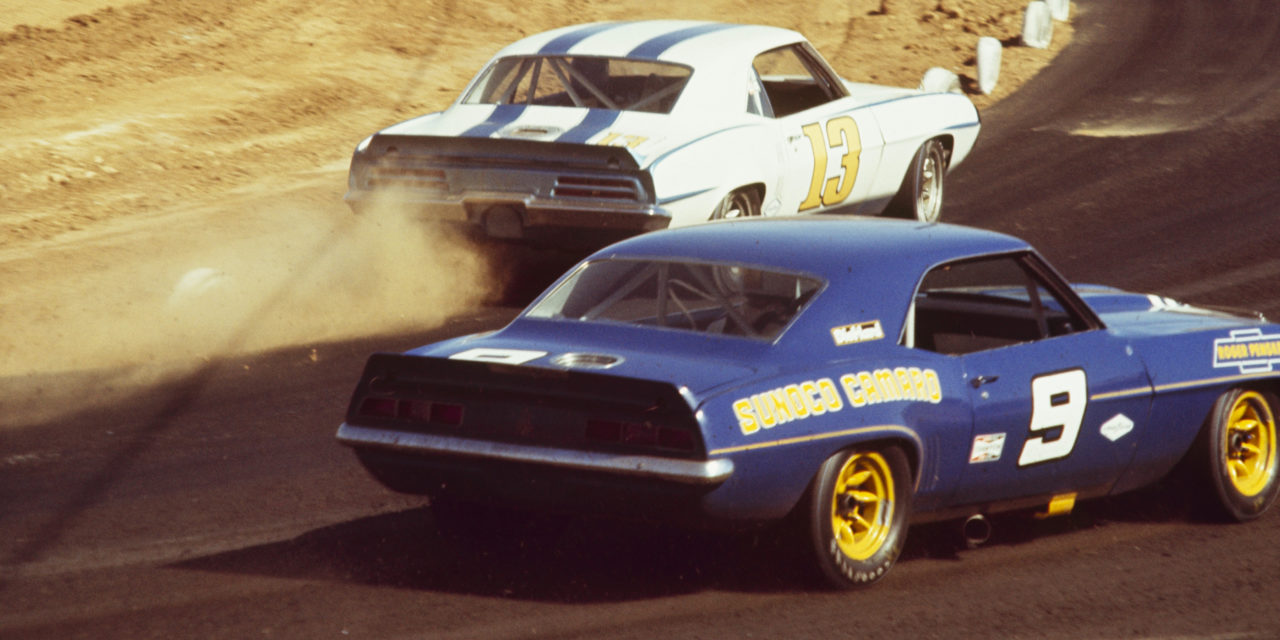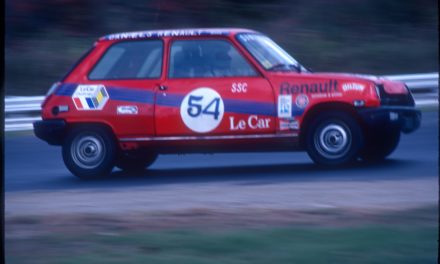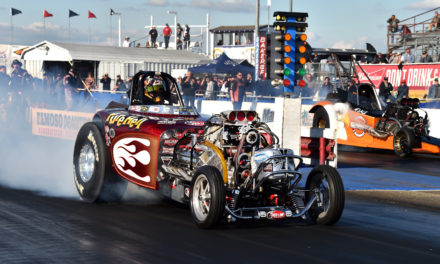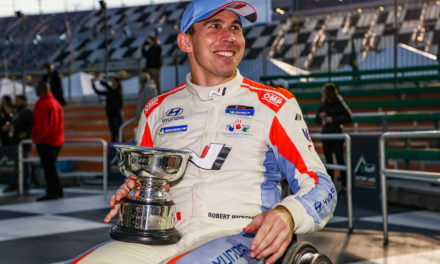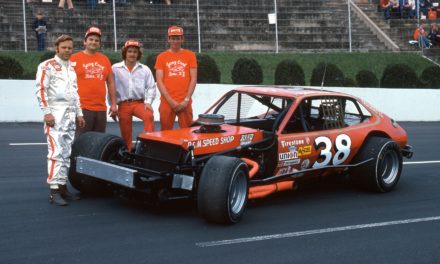(In the previous installments—Part 1 and Part 2—we discussed the SCCA’s new passing rules and chatted with professional racers about what they consider to be a proper overtake. Let’s take a look at some of the famous passes throughout motorsport history and see where the pros land. Impish or admirable? – Ed)
1989 Japanese Grand Prix at Suzuka
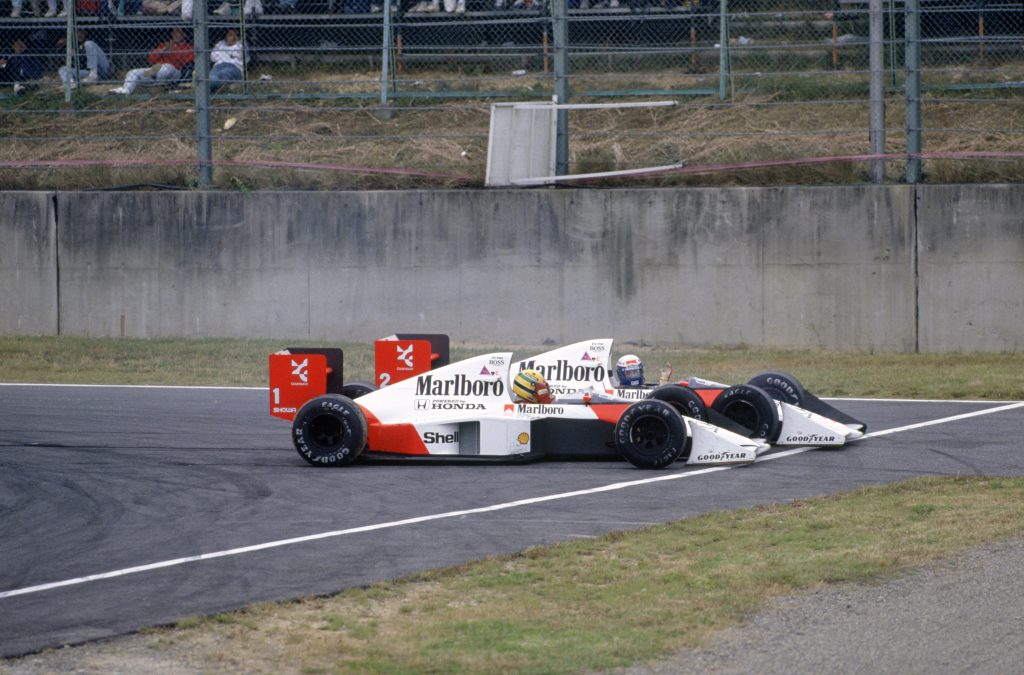
During the second-to-last race of the Formula 1 season, McLaren teammates Ayrton Senna and Alain Prost were fighting for the championship. With six laps to go, Senna made an ambitious lunge up the inside at the chicane. Prost aggressively closed the door, and they clashed. Senna was disqualified later, effectively gifting Prost with the title.
Ricky Taylor: “Being a Senna fan, it’s so hard for me to say. That’s right on the borderline. Senna came from really, really far back. But it also looks like Prost turned in early. I’d hate to be a race director making that call.”
Chris Dyson: “I believe Prost knew exactly what would happen if he left the door open, and Senna took the bait.”
Derek Daly: “One-hundred percent Prost’s fault. He understood that if he took Senna out, he’d win the World Championship, so that’s exactly what he did.”
Eddie Cheever: “If you had five people in a room, three would have one opinion and two would have the other.”
Conor Daly: “I saw it as a strategic call by Prost. Was it an aggressive move by Senna? Yes. But Senna was alongside him, so I think Prost was playing a little bit dirty.”
Max Papis: “Unacceptable. You (Prost) don’t turn in 10 car-lengths before the corner and not expect any consequences and then cry wolf later.”
John Watson: “I think Alain was a bit naughty. I think he was aware of what would happen if he turned in, and he turned in anyway. Ayrton was justifiably furious. But I think it was opportunistic, not premeditated.”
Nigel Roebuck: “Prost said, ‘I spoke to McLaren that morning, and I said, “I’ve spent the last two years saving you a lot of money in pranged cars because I’ve always given up whenever Senna made one of his crazy moves on me. He’s a bully in a race car. But I’m not going to open the door anymore.”
Keke Rosberg said later, ‘You could tell that Prost had never done that before because he did it so badly.’
And Mario Andretti said that if Prost hadn’t been there, Senna never would have made it around the corner.”
(A split verdict from our celebrity jury. – Ed)
1990 Japanese Grand Prix at Suzuka
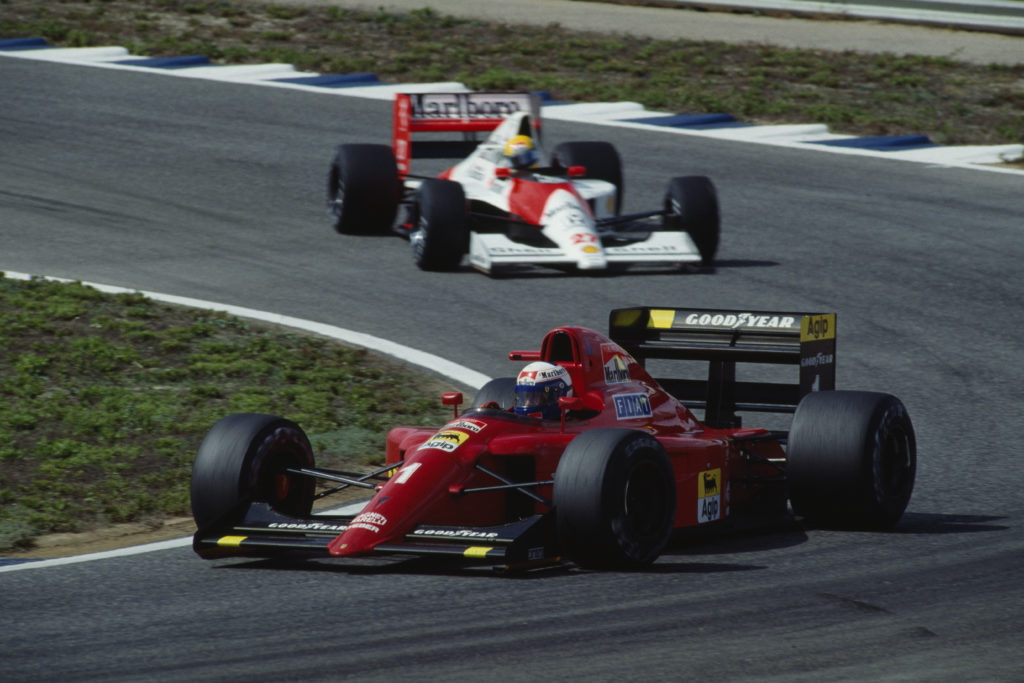
Ferrari Formula One driver Alain Prost leads McLaren-Honda driver Ayrton Senna through a corner during the Spanish Grand Prix. (Photo by Patrick Behar/Corbis via Getty Images)
One year after their notorious crash at Suzuka, Prost—now driving for Ferrari—and Senna clashed once again. When Prost led at the start, Senna purposely speared him at Turn 1. With both drivers out of the race, Senna won the World Championship.
Herta: “It’s hard for me not to admire Senna’s commitment at the moment. It wasn’t a slow corner, but he was committed to do whatever it took to win that championship.”
Dyson: “That was driver terrorism.”
Derek Daly: “It was 100 percent Senna’s fault. He’d worked everything out ahead of time.”
Watson: “I talked to Alain the following day. I asked him, ‘Why did you leave Senna that opportunity? Why didn’t you move from the right to the left?’ He told me, ‘John, it wouldn’t have mattered. If I’d been on the right or the left, he was going to nail me.’ It was payback for the previous year.”
Roebuck: “That was homicidal. Senna never lifted, and he hit Prost at 150 mph. The rear wing of the Ferrari flew off with 23 cars coming up the track. This was before the halo, and it easily could have killed somebody.”
1996 Monterey Grand Prix at Laguna Seca
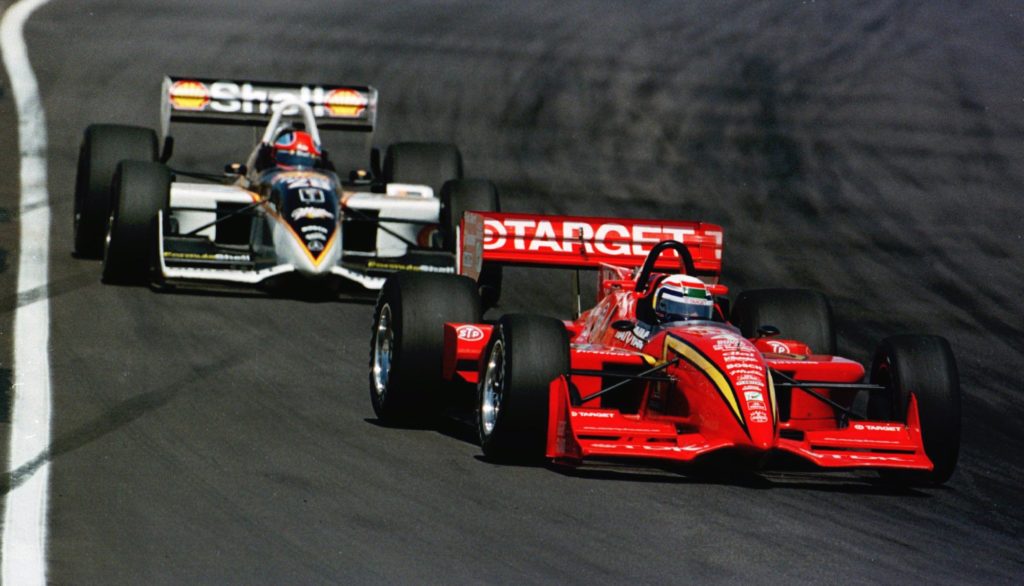
Using all of Laguna Seca’s corkscrew, Alex Zanardi completed a last lap pass on Bryan Herta to win the 1996 Monterey GP. Photo Credit: Jamie Squire
On the final lap, Alex Zanardi stormed up the inside of Bryan Herta at the Corkscrew, hurtled across his bow, and bounced over the berm en route to scoring his most improbable win. Although the move was immediately christened “The Pass,” officials subsequently changed their rules to make it illegal to leave the track to overtake another driver.
Ricky Taylor: “I think that’s the coolest pass of all time. Most of the rulebooks now say that if you go off track to gain an advantage, that’s a penalty. But Zanardi was very much in control.”
Dyson: “You wouldn’t be able to make that pass today because the track is different and the rules have changed. That was an inspired do-or-die last-lap pass by Alex, but he didn’t leave Bryan any options.”
Derek Daly: “It was a brilliant move by Zanardi. Of course, it would be illegal today. And Herta would now just move his car over to the middle of the road to prevent Zanardi from doing anything.”
Ross Bentley: “Herta did all the right stuff. He couldn’t defend anymore because Zanardi was so committed. If Herta had blocked the inside, then Zanardi would have gone around the outside.”
Conor Daly: “Was it entirely legal? It wouldn’t be with today’s track limits. You can’t always look in your mirrors. Sometimes things happen so fast that you just can’t react to them.”
Scott Pruett: “I was right behind them. I hoped they both were going to go off, and I was going to win the race. I was shocked that Zanardi pulled it off. That was not a calculated move. That was a wing and a prayer. That was, ‘I’m going to go a little deeper than even I can imagine, hope that he doesn’t turn in and then hope that I go down the hill and over that berm without hurting the car.’”
Roebuck: “As fond as I am of Zanardi, I’m of the belief that track limits should mean something. It was breathtaking, but I think there has to be a penalty for leaving the track.”
1989 Indianapolis 500
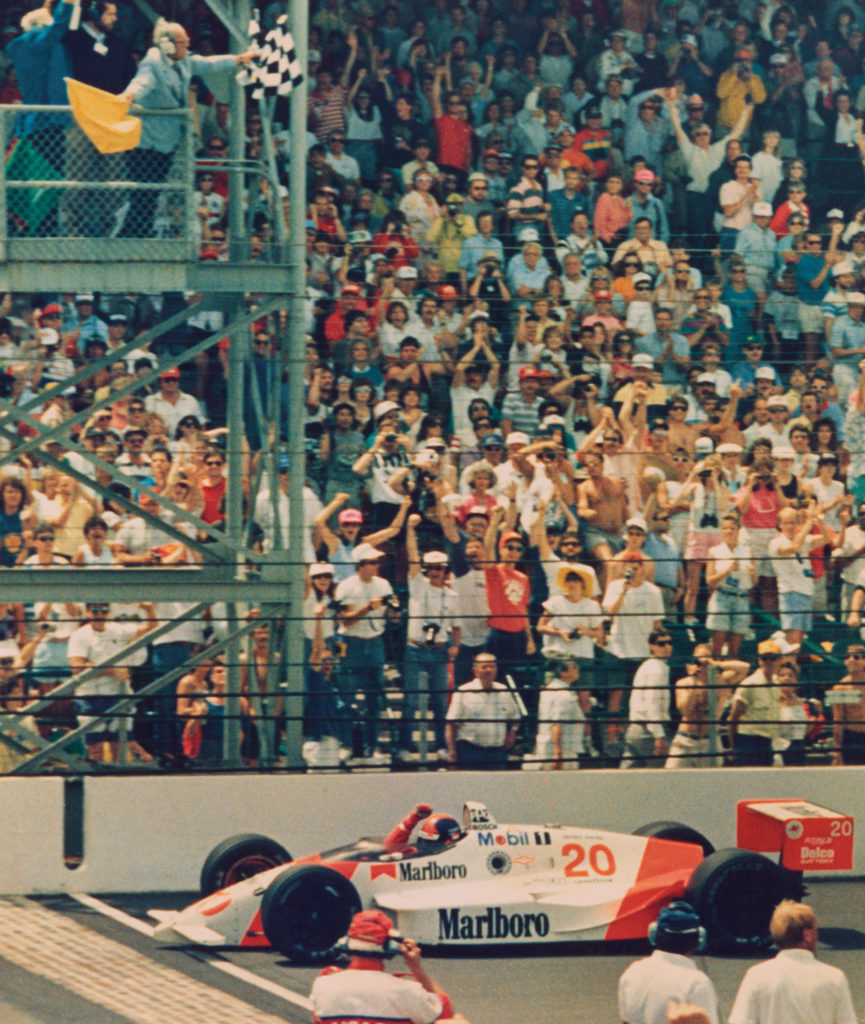
Emerson Fittipaldi of Brazil crosses the finish line to win the 1989 Indianapolis 500.
On the second-to-last lap, race leader Al Unser Jr. lost momentum in traffic. Emerson Fittipaldi got a run down the backstraight and dived underneath Unser in Turn 3. The two cars touched, sending Unser in to the wall. As Fittipaldi took his victory lap, Unser stood on the edge of the track and gave him a sportsmanlike thumbs-up.
Cheever: “When Unser went back out on the track, I think he wanted to use a different finger.”
Dyson: “Did Fittipaldi have to go for it? He absolutely did. Did Unser have to come down on him? He absolutely did.”
Derek Daly: “Pure racing.”
Bentley: “That was just good hard racing—two guys going as hard as they possibly could, and one guy getting away with it.”
Papis: “Both had the right to the corner. One car stuck, the other didn’t. To me, that was pure racing. If they hadn’t gone for it, they wouldn’t have been able to look at themselves later.”
2012 Indianapolis 500
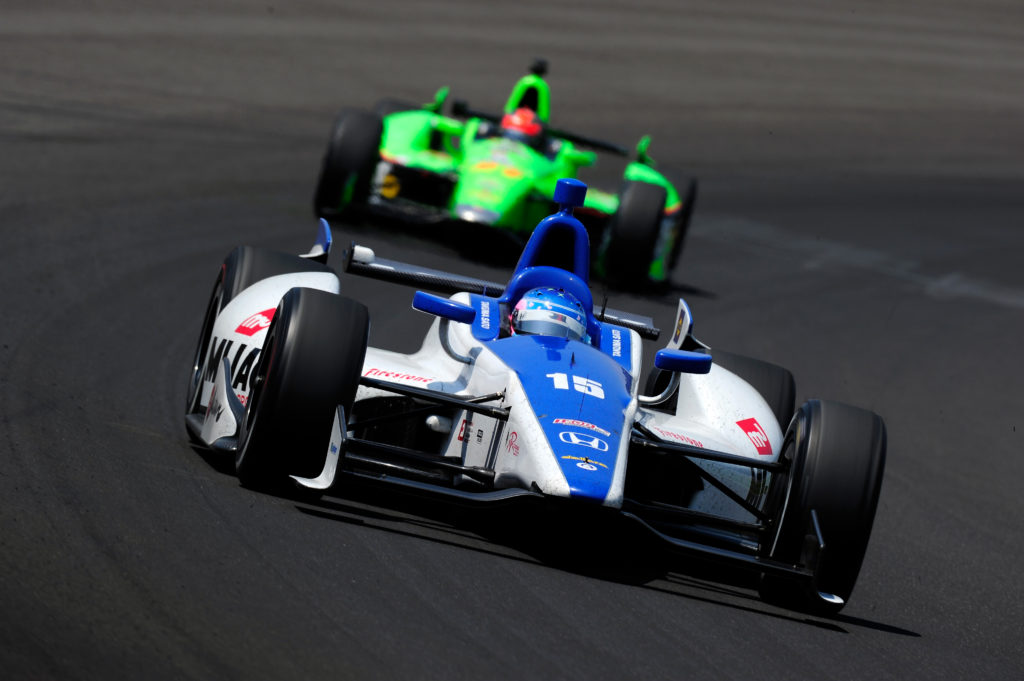
Takuma Sato (Photo by Robert Laberge/Getty Images)
Starting the last lap, Takuma Sato got a monster run on Dario Franchitti, who’d taken the lead just one lap earlier. Sato made a very late, very risky dive into Turn 1 as Franchitti squeezed down toward the apron. Just when a collision seemed imminent, Sato’s car looped around and clobbered the wall while Franchitti won the race.
Herta: “It was amazing. You had Sato totally committed on the inside and Dario totally committed on the outside.”
Derek Daly: “Typical Sato, trying to do something that was almost impossible.”
Cheever: “I was of the opinion that Sato was 100 percent right [to go for it].”
Bentley: “That was a really bad decision on Sato’s part.”
Conor Daly: “I thought Franchitti gave him enough room. I’d call it a racing incident. Takuma went for it even though he knew it would be really hard to make the corner on such a tight line.”
Roebuck: “Of course, Takuma had to go for it, and of course, Dario had to go for it. Jesus, look at the load Eddie Sachs had to carry with him for the rest of his life after he pitted with three laps to go [while leading the Indy 500] in 1961 because he thought a tire was failing.”
(As you can see, it all depends who you ask. -Ed)
2017 Rolex 24 at Daytona

The #10 Corvette DP racer of Jordan Taylor, Ricky Taylor, Max Angelelli and Rubens Barrichello. (Photo by Brian Cleary/Getty Images)
With seven minutes left in the race, Ricky Taylor slipped underneath race leader Filipe Albuquerque in Turn 1. Albuquerque belatedly tried to close the door. The two cars hit, with Albuquerque getting the worst of the collision, leaving Taylor to cruise to victory.
Ricky Taylor: “Our car was really good in Turn 1. He was braking early, and I’d get a run on him every lap. He got a little balked at the Bus Stop. I followed him for the next 45 seconds knowing that I was going to release the brake in Turn 1 as soon as I saw him open his hands [to navigate the kink before the apex]. When I saw that he was definitely coming in on me, I got back on the brakes, and that’s what made it look worse than it was.”
Dyson: “That’s a really tough one. I think it was a brilliant move. But if Felipe had ended up in the wall, it might have been different.”
Mark Raffauf: Taylor was on the correct line. He’d presented himself before on several laps. It wasn’t a kamikaze move. Albuquerque left room, and when he turned in, Taylor had no place to go. The call from the stewards was unanimous. Then they asked me what I thought, and I said, ‘You can’t penalize Taylor for doing the right thing.’”
Pruett: “That’s a really, really difficult call to make. He pulled it off without too much contact. It was a ballsy move, and he made it stick.”

